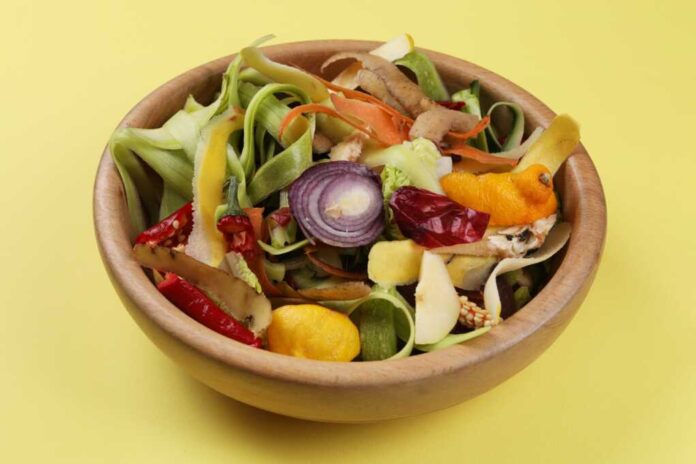
Americans throw away over a third of their food supply yearly, but those fruit and vegetable scraps headed for the trash could be the key to better nutrition and a healthier planet.
At a Glance
- The USDA estimates that 30-40% of the U.S. food supply is wasted annually, contributing to climate change and resource depletion
- Many fruit and vegetable scraps contain higher concentrations of nutrients than the parts we typically eat
- Food scraps can be repurposed for broths, seasonings, and cleaning products, reducing waste and saving money
- Composting food scraps enriches soil, reduces landfill waste, and helps combat climate change
- Simple changes in kitchen habits can significantly increase nutritional intake while reducing environmental impact
The Hidden Nutritional Powerhouses in Your Kitchen Waste
Many of the fruit and vegetable parts we routinely discard are actually more nutritious than the portions we typically consume. Outer cabbage leaves contain more calcium, magnesium, and potassium than inner leaves. Broccoli stems and leaves are packed with folate, calcium, vitamin A, and compounds with anticancer properties. Even potato skins offer more nutrients than the flesh, containing significant amounts of fiber, potassium, and vitamin C. These overlooked parts of produce can significantly enhance the nutritional value of meals while reducing waste and grocery bills.
Beet greens are another example of nutritional gold often thrown away. They contain more iron than spinach and are excellent sources of vitamin A, potassium, and calcium. Carrot peels are rich in antioxidants that support immune health, while kiwi skin provides triple the fiber of the fruit’s flesh. Understanding the nutritional profiles of these commonly discarded food parts can transform how we view kitchen scraps and inspire more sustainable eating habits that benefit both personal health and environmental wellness.
Turn kitchen scraps and dried leaves into nutrient-rich soil for your healthy, organic garden. A compost tumbler is one way to compost that is convenient, odor free, and quickly produces soil.
Enhance your healthy garden with your own organic compost! 🌿 #Composting #PIHHealth💚 pic.twitter.com/vUzkT7E76G— PIH Health (@PIHHealth) May 29, 2024
Creative Ways to Use Food Scraps in Daily Cooking
Transforming food scraps into culinary assets is easier than most people realize. Vegetable peels, ends, and stems make excellent flavor bases for homemade broths and stocks. Simply collect scraps in a freezer bag until you have enough to simmer with herbs and water. Citrus peels can be dried and ground into zesty seasonings or infused into vinegar for natural cleaning solutions. Herb stems, often discarded, add tremendous flavor to soups, stews, and marinades when bundled into a bouquet garni.
Some scraps can even be regrown into new produce. Scallion ends placed in water will regrow within days. Celery bases, lettuce cores, and even pineapple tops can be regenerated with minimal effort. Stale bread becomes croutons or breadcrumbs rather than trash. Coffee grounds can be incorporated into baked goods for depth of flavor or used as a meat tenderizer. These creative approaches not only reduce waste but add variety and nutrition to everyday meals while stretching grocery budgets further.
Composting: Turning Kitchen Waste into Garden Gold
Composting transforms food scraps into nutrient-rich soil amendments, completing the food cycle in the most natural way. The process involves balancing carbon-rich “brown” materials like dried leaves with nitrogen-rich “green” materials such as fruit and vegetable scraps. When properly managed with adequate moisture and aeration, microorganisms break down these materials into humus that dramatically improves soil structure and fertility. Successful composting requires avoiding meat, dairy, oils, and excessive citrus peels that can attract pests or harmful bacteria.
The environmental benefits of composting extend far beyond garden enrichment. By diverting food waste from landfills, composting reduces methane emissions—a greenhouse gas 25 times more potent than carbon dioxide. It also sequesters carbon in soil, enhances water retention, and reduces erosion. For those without outdoor space, vermicomposting using worms can be done indoors in small containers. The finished compost can enrich houseplants, garden beds, or be brewed into compost tea for liquid fertilizer, creating a sustainable cycle that mimics natural ecosystems.
Beyond Food: Other Creative Uses for Kitchen Scraps
Kitchen scraps offer value beyond direct food applications. Eggshells, rich in calcium, can be crushed and added to garden soil, particularly benefiting tomato plants by preventing blossom end rot. Coffee grounds work as natural fertilizers for acid-loving plants and can also be used as odor absorbers or exfoliants in DIY beauty products. Banana peels, high in potassium and magnesium, can be buried near rose bushes or other flowering plants to promote blooming, or used to polish silverware and leather.
Citrus peels contain natural d-limonene, making them effective pest deterrents in gardens and natural cleaning agents around the home. They can be infused in vinegar for all-purpose cleaners or simmered with spices for natural air fresheners. Even avocado pits can be used to create natural fabric dyes. These innovative applications demonstrate how kitchen scraps represent untapped resources rather than waste, offering solutions that replace commercial products with natural alternatives that save money while reducing environmental impact.


















